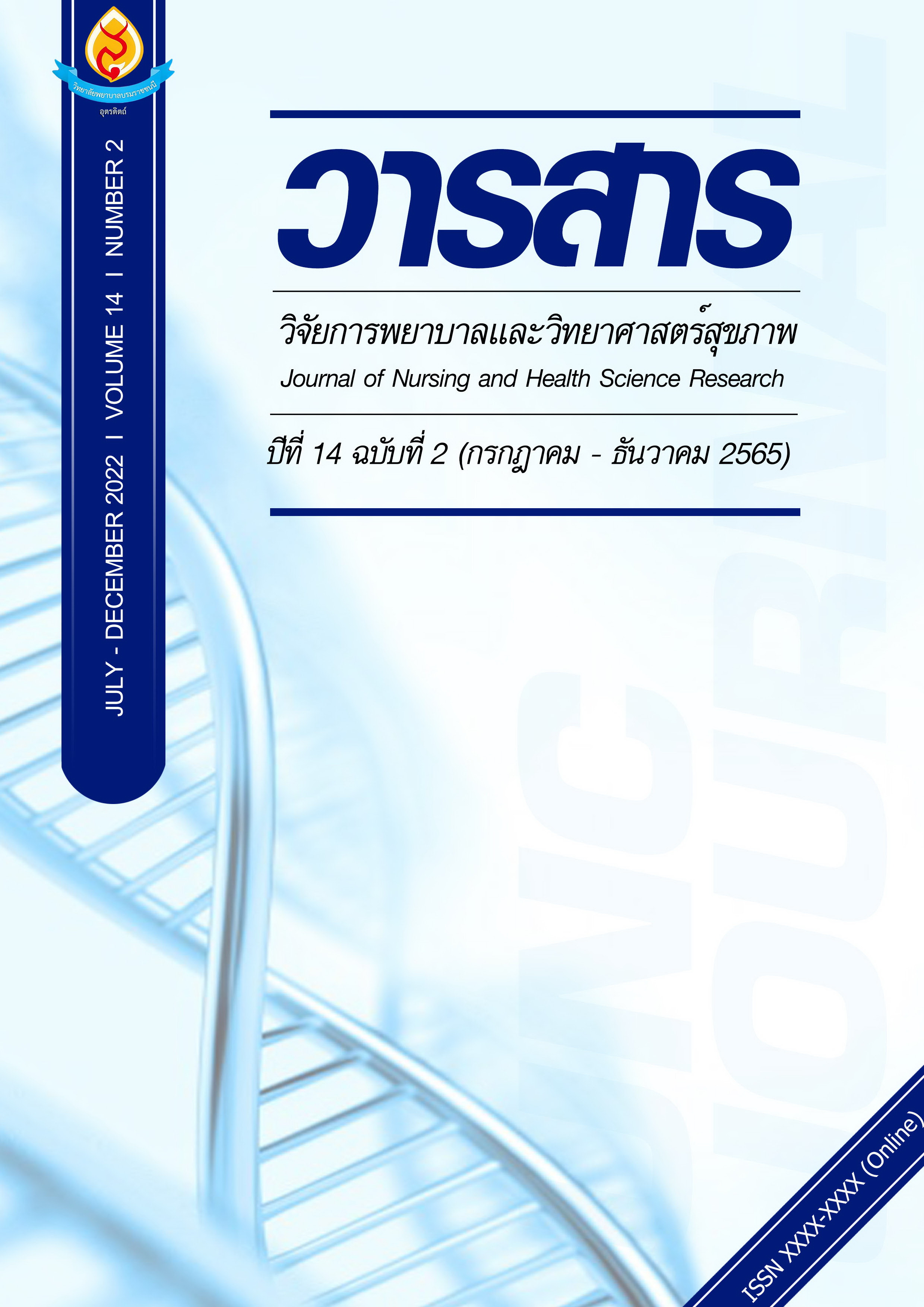ต้นทุนและประสิทธิผลรูปแบบกระบวนการล้างทำความสะอาดกล้องส่องตรวจท่อทางเดินน้ำดีและตับอ่อน ในห้องผ่าตัด โรงพยาบาลสมเด็จพระยุพราชท่าบ่อ จังหวัดหนองคาย
Main Article Content
บทคัดย่อ
การวิเคราะห์ต้นทุนประสิทธิผล (Cost-effectiveness analysis, CEA) นี้ เพื่อเปรียบเทียบรูปแบบกระบวนการล้างทำความสะอาดกล้องส่องตรวจท่อทางเดินน้ำดีและตับอ่อน ภายใต้การล้างกล้องแบบปกติ และเปรียบเทียบกับ 3 รูปแบบการล้างทำความสะอาด โดยใช้มุมมองของผู้ให้บริการ เปรียบเทียบการทำความสะอาดกล้องส่องตรวจท่อทางเดินน้ำดีและตับอ่อนที่ใช้ในห้องผ่าตัดโรงพยาบาลสมเด็จพระยุพราชท่าบ่อ จำนวนทั้งสิ้น 200 ครั้ง ต้นทุนทางตรงประกอบด้วย ต้นทุนค่าแรง ค่าวัสดุและค่าครุภัณฑ์ ประสิทธิผลประกอบด้วย สิ่งตกค้าง (Adenosine triphosphate( ATP) และเวลาการล้างทำความสะอาด นำเสนอผลการศึกษาด้วย ร้อยละ Independent t test Fisher’s Exact test และอัตราส่วนต้นทุนประสิทธิผลส่วนเพิ่ม
ผลการศึกษาพบว่ารูปแบบที่ 3 และ 4 มีต้นทุนสูงที่สุด เท่ากับ 1,072 บาท การเปรียบเทียบประสิทธิผลผลการตรวจหาสิ่งตกค้างกระบวนการล้างทำความสะอาดกล้องส่องตรวจท่อทางเดินน้ำดีและตับอ่อน
พบว่าการล้างกล้องส่องตรวจแบบปกติเปรียบเทียบกับ 3 รูปแบบกระบวนการล้างทำความสะอาด พบว่า การตรวจหาสารตกค้าง Adenosine triphosphate (ATP) ด้วยวิธีการล้างแบบ Water test และ Surface test มีค่าการตกค้างไม่ เกิน 200 RLU (Relative Light Units) อย่างมีนัยสำคัญทางสถิติที่ระดับ .001 การส่งเพาะเชื้อ (Aerobic bacteria culture) ไม่มีความแตกต่างกันอย่างมีนัยสำคัญทางสถิติ รูปแบบที่ 3 และ 4 มีระยะเวลาการล้างกล้องนานที่สุดเท่ากับ 77 นาที เมื่อพิจารณาอัตราส่วนต้นทุนประสิทธิผลพบว่ารูปแบบที่ 4 มีอัตราส่วนต้นทุนประสิทธิผลเท่ากับ 1.098 ต่อการตรวจพบเชื้อ
Article Details

อนุญาตภายใต้เงื่อนไข Creative Commons Attribution-NonCommercial-NoDerivatives 4.0 International License.
บทความหรือข้อคิดเห็นใดใดที่ปรากฏในวารสารวิจัยการพยาบาลและวิทยาศาสตร์สุขภาพ เป็นวรรณกรรมของผู้เขียน ซึ่งบรรณาธิการหรือสมาคมศิษย์เก่า ไม่จำเป็นต้องเห็นด้วย และบทความที่ได้รับการตีพิมพ์เผยแพร่ถือเป็นลิขสิทธิ์ของวารสารวิจัยการพยาบาลและวิทยาศาสตร์สุขภาพ
เอกสารอ้างอิง
Amodio, E., Dino, C. (2014). Use of ATP bioluminescence for assessing the cleanliness of hospital surfaces: a review of the published literature (1990-2012). Journal of Infection and Public Health, 7(2), 92-98.
Briggs, A. Claxton, K., Sculpher, M. (2006). Decision modelling for health economic evaluation. Oxford: Oxford University Press.
Chaiyapo, A. (2018). Result of treatment in common bile duct stones by Endoscopic Retrograde Cholangiopancreatography in Prapokklao Hospital. Journal of Prapokklao Hospital Clinical Medical Education Center, 35(3), 248-256. (in Thai).
Drummond M.F., Stoddart G.W., and Torrance G.W., (1994). Method for the Economic Evaluation for the Economic Evaluation of Health Care Programmes. Oxford: Oxford University Press.
Drummond, M. F., Sculpher, M. J., Torrance, G. W., O'Brien, B. J., & Stoddart, G. L. (2005). Methods for the economic evaluation of health care programme. 3rd edition. Oxford: Oxford University Press.
Maneechot, S. (2016). Unit cost analysis of NKC Institute of Gastroenterology and Hepatology, Songklanagarind Hospital. (master’s thesis), Prince of Songkla University. (in Thai).
Nelson, D.B., Muscarella, L.F. (2006) Current issues in endoscope reprocessing and infection control during gastrointestinal endoscopy. World Journal of Gastroenterology, 12(25), 3953-3964.
Riewpaiboon, A. (2018). Cost analysis in health systems. Bangkok: Saksopa. (in Thai).
Society of Gastroenterology Nurses and Associates, 2013 Standards of Infection Control in
Reprocessing of Flexible Gastrointestinal Endoscopes. Gastroenterol Nursing, 36(4), 293- 303.
Society of Gastroenterology Nurses and Associates. (2000) Guideline for the use of high-level disinfectants and sterilants for reprocessing of flexible gastrointestinal endoscopes. Gastroenterol Nursing, 23(4), 180-187.
Society of Gastroenterology Nurses and Associates. (2016). Standards of infection prevention in Reprocessing Flexible Gastrointestinal Endoscopes. Illinois: SGNA.
Soreide, J.A., Karlsen, L.N., Sandblom, G., Enochsson, L. (2019). Endoscopic retrograde cholangiopancreatography (ERCP): lessons learned from population-based national registries: a systematic review. Surgical Endoscopy, 33(6), 1731-1748.
The Asia Pacific Society of Infection Control, (2018). The APSIC Guidelines for the prevention of surgical site infections. Bangkok. The Asia Pacific Society of Infection Control.


